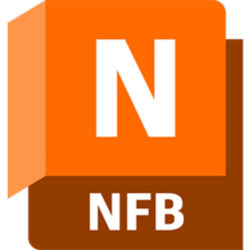ArcGIS Desktop 10.8 Version is a powerful GSI professional electronic map information editing and development software. ArcGIS Desktop includes two main applications for mapping and visualization, namely ArcMap and ArcGIS Pro. ArcMap is the primary application for mapping, editing, analysis, and data management in ArcGIS Desktop. ArcMap 10.8 introduces new capabilities for mapping, geocoding, and the ArcGIS Network Analyst extension, and 10.8 also includes changes to database and geodatabase support.
ArcGIS provides a unique set of capabilities for applying location-based analysis to your business practices. Visualize and analyze your data with contextual tools for deeper insights. Collaborate with others and share your insights with maps, apps and reports. The software is a new spatial information browser powered by ArcGIS for Server; it provides a free, fast and easy-to-use way to browse geographic information, whether it is 2D or 3D information; and provides powerful data query and analysis tasks.

ArcGIS Desktop 2023 New Features:
1. Powerful desktop GIS
Let professional-grade software do the heavy lifting for you. The two main desktop applications for GIS professionals are ArcMap and ArcGIS Pro, both of which are part of ArcGIS Desktop. Each application has unique features to suit your needs. Ability to create everything from simple web maps to complex analytical models. Learn more about software. You can also get CSI ETABS Ultimate 21 2023 By LicensedSoft.
2. Create and design maps and 3D scenes
If a picture is worth a thousand words, a correlation map is worth a thousand pictures. Use 2D maps and 3D scenes created on your desktop to display data in novel ways and discover hidden relationships, voids, trends and opportunities. Tell a complete story with maps
3. Analysis
The world is full of unresolved problems. List these questions, analyze the data, derive results using various analysis tools and examine your work in 2D and 3D. ArcGIS Desktop has a rich analysis toolbox and modeling framework that enables you to perform almost any type of spatial analysis. Learn more about analytics.
4. Manage geographic data
Take control. Build, manage, and connect geographic information using feature and tabular data, imagery, online maps, 3D data, and more. Go to the next level and enable enterprise-scale collaboration and manage collections of information across your organization with the ArcGIS platform. Learn more about geographic data management
5. Image
Access ready-to-use imagery from the world’s largest and most comprehensive collection. Take advantage of an intelligent management system that can scale to handle massive amounts of data and recognize the sensors you use every day. Learn more about working with imagery
6. Expand the scope of application
Transfer maps to others and import them to their smartphones quickly and seamlessly. Turn professional desktop data, maps, and analytics into hosted maps, analysis services, feature layers, and image services. Use ArcGIS for Server and ArcGIS Online to provide administrative access to your entire organization. Learn about expanding the reach of GIS
7. 3D GIS
The world is not flat, and you are no longer limited to abstract concepts. Use 3D to see data in real terms, make better decisions, and communicate ideas more powerfully and effectively. ArcGIS Desktop will take you to enjoy 3D GIS.
ArcGIS Desktop 10.8 New Functions:
1. 3D Analyst
New Environments – New analysis environment settings, cell size projection methods, available for most tools in the Raster Interpolation, Math, Reclass and Surface toolsets. This setting determines how the output raster cell size is calculated when projecting the dataset during analysis. The default method, Convert units, is equivalent to the method used in previous versions. Two other methods are now available, Preserve Resolution and Center of Range.
Raster Surface toolset – Contour tools have improved performance for most polygon and polyline output
2. Multidimensional Toolbox
The Make NetCDF Raster Layer and Make OPeNDAP Raster Layer tools have a new parameter Cell Registration that controls how cells are registered relative to the XY coordinates.
The Make NetCDF Table View tool is now null in the output table view for missing_value or _FillValue attributes of variables in the netCDF file.
3. Spatial Analyst
1. New Environment of ESRI ArcGIS
A new analysis environment setting “Element Size Projection Method” is available for many Spatial Analyst tools. This setting determines how the output raster cell size is calculated when projecting the dataset during analysis.
2. Distance toolset
The Euclidean distance tools do not support parallel processing factor environments.
3. Extract Toolset
The Extract Multipoint, Extract Value to Point and Sample tools have been redesigned for better performance. The interpolation methods for these tools have also been improved. Now, the Sample tool supports image services for multidimensional data.
4. Hydrology toolset
The Flow Distance tool has a new parameter StatType that determines the type of statistic used to calculate flow distance over multiple flow paths.
5. Neighborhood toolset
Focal Statistics tools now support parallel processing of factor environments. The tool uses multiple processors to improve performance when computing statistics for the output raster.
6. Surface toolset
The Contour tool has improved performance for most polygon and polyline output.



